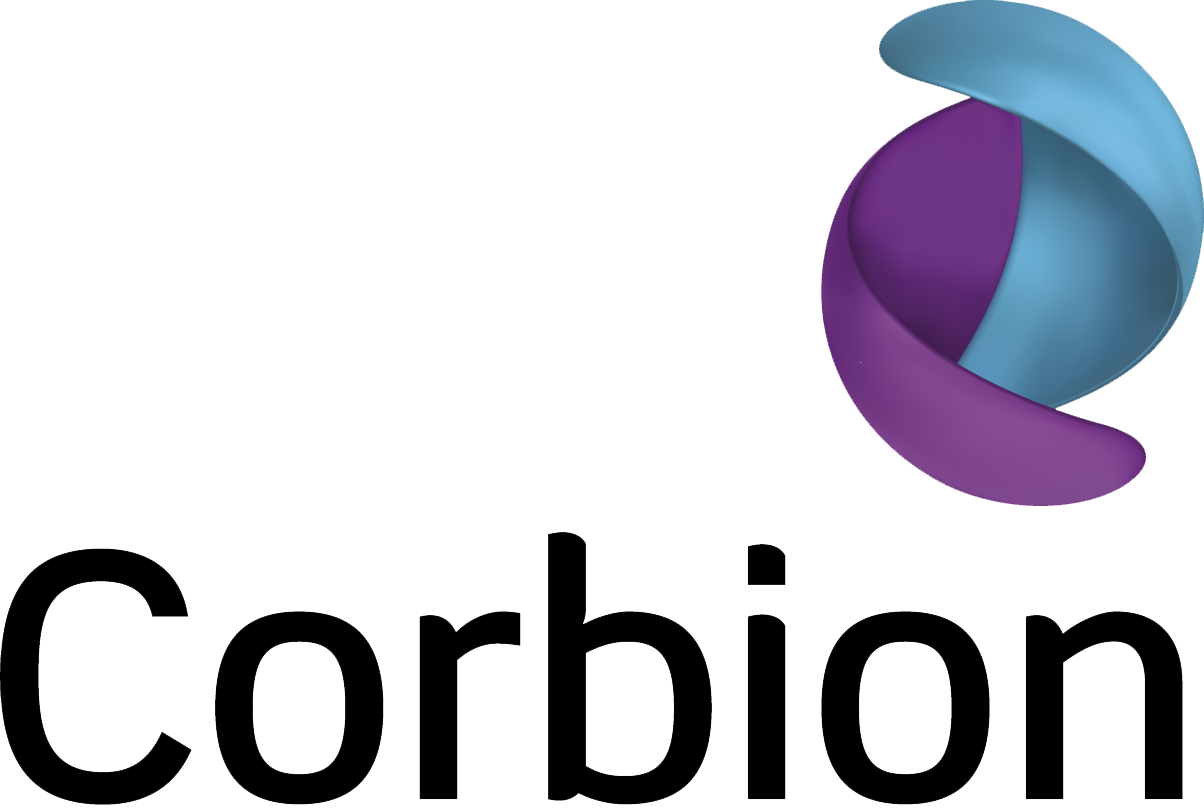2. Accounting principles
Basis of preparation
The consolidated financial statements of Corbion nv have been prepared in accordance with the International Financial Reporting Standards (IFRS) adopted by the European Union.
New and amended standards adopted by the group
In 2023, Corbion applied all the new and amended standards and interpretations published by the International Accounting Standards Board (IASB) and the International Financial Reporting Interpretations Committee (IFRIC), if and insofar as these applied to Corbion and were effective as at 1 January 2023. Corbion did not have to change its accounting policies or make retrospective adjustments as a result of adopting these standards.
IFRS 17 Insurance Contracts
The new standard had no impact on the Group’s consolidated financial statements.
Definition of Accounting Estimates - Amendments to IAS 8
The amendments had no impact on the Group’s consolidated financial statements.
Disclosure of Accounting Policies - Amendments to IAS 1 and IFRS Practice Statement 2
The amendments to IAS 1 and IFRS Practice Statement 2 Making Materiality Judgements provide guidance and examples to help entities apply materiality judgements to accounting policy disclosures. The amendments aim to help entities provide accounting policy disclosures that are more useful by replacing the requirement for entities to disclose their ‘significant’ accounting policies with a requirement to disclose their ‘material’ accounting policies and adding guidance on how entities apply the concept of materiality in making decisions about accounting policy disclosures.
In line with the amendments in IAS 1, specifically article 117, Corbion removed several accounting policy disclosures and standardized information, or information that only duplicates or summarizes the requirements of the IFRSs. The accounting policy information focuses on how Corbion has chosen alternatives in IFRS standards and how Corbion has applied the requirements of the IFRSs to its own circumstances. Further, some information which was previously provided in the accounting policies section is now disclosed in the note it relates to.
The amendments have had an impact on the Group’s disclosures of accounting policies, but not on the measurement, recognition or presentation of any items in the Group’s financial statements.
Accounting standards and interpretations not yet adopted
A number of amended standards are effective for annual periods beginning on or after 1 January 2024 and earlier application is permitted; however, Corbion has not yet adopted the amended standards in preparing these consolidated financial statements.
Consolidation
The consolidation includes the financial data of Corbion nv and its group companies (together Corbion). All inter-company receivables, debts, and transactions have been eliminated. Group companies are companies in which Corbion nv exercises control. The results of acquisitions and divestments are recognized from the moment that control is obtained or transferred.
Foreign currency
The consolidated financial statements are in euros. The euro is Corbion nv’s functional and presentation currency.
Summary of material accounting policies
Property, plant, and equipment
Land, buildings, machinery and equipment, and other operating assets are valued at the acquisition price or the cost of production, subject to straight-line depreciation calculated over the estimated economic life, the estimated residual value, and any accumulated impairment losses. The cost of production includes the cost of materials and direct labor and an attributable part of the indirect costs. Land is not depreciated. Grants are deducted from the acquisition price or the production costs of the assets to which the grant relates. Subsequent expenditure is capitalized only if it is probable that the future economic benefits associated with the expenditure will flow to Corbion. Depreciation methods, useful lives, and residual values are reviewed at each reporting date and adjusted if appropriate.
Leased assets and liabilities
The lease liability is initially measured at the present value of outstanding lease payments, discounted using the interest rate implicit in the lease or, if that rate cannot be readily determined, the group’s incremental borrowing rate. Generally, Corbion uses its incremental borrowing rate as the discount rate.
Payments associated with short-term leases of equipment and vehicles and all leases of low-value assets are recognized on a straight-line basis as an expense in profit or loss.
Inventories
Inventories of raw materials, consumables, technical materials, and packaging are stated at the lower of cost (first in, first out) and net realizable value. Inventories of work in progress and finished products are stated at the lower of production cost and net realizable value. Total cost of production includes payroll costs and materials and an attributable part of the indirect production costs.
Financial instruments
Classification and subsequent measurement of financial liabilities
Financial liabilities are classified as measured at amortized cost or fair value through profit and loss (FVTPL). A financial liability is classified as at FVTPL if it is classified as held-for-trading, if it is a derivative, or designated as such on initial recognition. Financial liabilities at FVTPL are measured at fair value and net gains and losses, including any interest expense, are recognized in profit or loss. Other financial liabilities are subsequently measured at amortized cost using the effective interest method. Interest expense and foreign exchange gains and losses are recognized in profit or loss. Any gain or loss on derecognition is also recognized in profit or loss.
Corbion derecognizes a financial liability when its contractual obligations are discharged, cancelled, or expired. Corbion also derecognizes a financial liability when its terms are modified and the cash flows of the modified liability are substantially different, in which case a new financial liability based on the modified terms is recognized at fair value.
On derecognition of a financial liability, the difference between the carrying amount derecognized and the consideration paid (including any non-cash assets transferred or liabilities assumed) is recognized in profit or loss.
Segment reporting
An operating segment is an entity that engages in business activities from which it earns revenues and incurs expenses. All operating segments are reviewed regularly by the Executive Committee to make decisions about resources to be allocated to the segments and assess their performance for which discrete financial information is available.
Net sales
Net sales comprises the proceeds of goods delivered to third parties less discounts and value-added tax.
Revenue from the sale of goods in the normal course of business is recognized at a point in time when the performance obligation is met and based on the amount of the transaction price that is allocated to the performance obligation. The transaction price is the amount of the consideration to which the company expects to be entitled in exchange for transferring the promised goods to the customer. The consideration expected by the company may include fixed and/or variable amounts which can be impacted by sales returns, trade discounts, and volume rebates. Revenue from the sale of goods is recognized when control of the asset is transferred to the buyer and only when it is highly probable that a significant reversal of revenue will not occur as uncertainties related to a variable consideration have been resolved.
Cash flow statement
The consolidated cash flow statement is drawn up using the indirect method. The items in the consolidated income statement and consolidated statement of the financial position have been adjusted for changes that do not impact cash inflow and outflow in the reporting year. Cash flows in foreign currencies are translated to the functional currency at the average foreign exchange rates unless this average is not a reasonable approximation of the cumulative effect of the rates prevailing on the transaction dates, in which case cash flows are translated at the rate on the dates of the transactions.
Critical accounting estimates and judgments
Corbion makes use of accounting estimates and judgments. The inputs into our estimates and assumptions consider the climate-related matters on our critical accounting estimates. Corbion believes there is considerable uncertainty over these assumptions and how they will impact the business operations and the cash flow projections. The estimates and assumptions have been based on the available information and regulations in place as of 31 December 2023.
Described below are the estimates and judgments as at the balance sheet date that carry a substantial risk of a material adjustment to the book value of assets and liabilities in the next financial year.
Business combinations
Corbion has a process in place to identify all assets and liabilities acquired, including intangible fixed assets. The judgments made in identifying all acquired assets, determining the estimated fair value assigned to each class of assets acquired and liabilities assumed, as well as asset lives, can materially impact the results of operations. Estimated fair values are based on information available around the acquisition date and on expectations and assumptions of anticipated discounted cash flows that have been assessed as reasonable by Corbion.
Goodwill impairment
Every year, Corbion tests the goodwill for impairment based on the higher of fair value less cost to sell and the value-in-use method. The value in use is calculated on the basis of estimates and judgments of the expected cash flows which are discounted on a WACC basis. For a description of the main estimates, valuation assumptions, and a sensitivity analysis of the applied assumptions see Note 12.
Valuation and impairment testing (in)tangible fixed assets
(In)tangible fixed assets are tested for sustained impairment if there is an indication of possible impairment. A key factor is the recoverable amount which is calculated on the basis of estimates and assumptions of anticipated discounted cash flows, on the one hand, and an estimate of the fair value less cost to sell, on the other. For more information on impairments see Notes 10 and 12.
Pension and early-retirement schemes
Actuarial calculations are used to determine provisions for group personnel arrangements and net receivables or obligations from group pension plans. These calculations use assumptions in respect of future developments in salary, mortality, staff turnover, return on investments et cetera. Changes to these estimates and assumptions can lead to actuarial gains and losses which are recognized in the consolidated statement of comprehensive income. For more information on the applied assumptions see Note 20.
Taxes
Corbion is subject to various tax systems across the world. Estimates and judgments are used to determine the tax items in the financial statements. Interpretation differences in tax liabilities are also taken into account.
Pillar Two legislation has been enacted or substantively enacted in certain jurisdictions Corbion operates. The legislation will be effective for the Corbion’s financial year beginning 1 January 2024. Corbion is in scope of the enacted or substantively enacted legislation and has performed an assessment of Corbion’s potential exposure to Pillar Two income taxes. The assessment of the potential exposure to Pillar Two income taxes is based on the most recent tax filings, country-by-country reporting and financial statements for the constituent entities in Corbion. Based on the assessment, the Pillar Two effective tax rates in most of the jurisdictions in which Corbion operates are above 15%. However, there are a limited number of jurisdictions where the transitional safe harbor relief does not apply and the Pillar Two effective tax rate is close to 15%. Corbion does not expect a material exposure to Pillar Two income taxes in those jurisdictions and no deferred taxes will be recognized.
For more information on taxes see Note 21.

